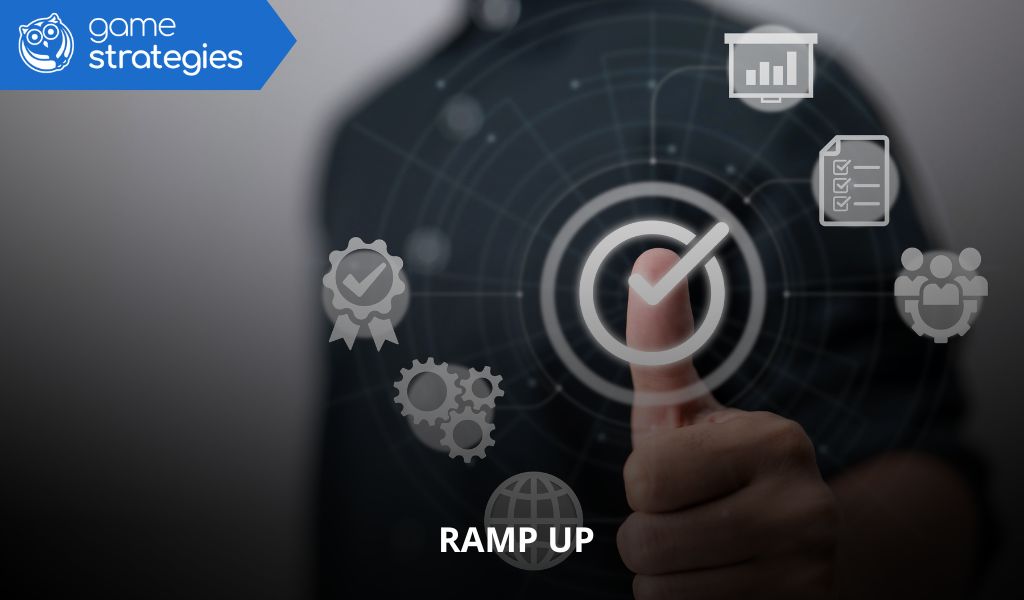Gamification in the workplace has become a powerful catalyst for transforming training, raising motivation and improving results across organisations. Far from being a passing fad, this approach uses game logic to energise working environments, make learning processes more attractive and foster team commitment.
At Game Strategies we design tailored solutions that combine technology, storytelling and data analytics to help companies gamify corporate training effectively. Before exploring the tools, let’s break down the concept, benefits and real‑world impact of this methodology.
Public institutions such as Spain’s National Institute of Public Administration (INAP) also leverage gamification to modernise professional development. By focusing on key competencies, INAP has shown that gamification is a robust way to motivate and support continuous learning in complex workplaces.
What does it mean to gamify corporate training?
Simple definition and practical examples
To gamify corporate training means applying game elements—points, levels, rewards or missions—to work contexts so routine tasks feel more like a motivating game. Examples include awarding points for completing courses, issuing badges for goals reached, or running friendly leader boards for sales targets.
Differences between gamify corporate training and traditional methods
Traditional learning often relies on passive content and rigid procedures. Gamified approaches put employees at the centre, offering interactive journeys with constant feedback, immediate rewards and visible progress.
Processes you can gamify in corporate training
- Professional development and learning programmes
- Onboarding and welcome schemes
- Project management and productivity workflows
- Performance reviews and talent development
- Team‑building and cultural initiatives
Advantages of gamify corporate training
Boosts motivation and employee participation
Reward systems, levels and challenges turn daily tasks into achievable, satisfying goals, lifting engagement and workplace morale.
Improves knowledge retention
Active participation, repetition and decision‑making reinforce learning, while visual and narrative elements make content memorable.
Encourages healthy competition and teamwork
Leader boards, group challenges and shared achievements stimulate both individual performance and collective spirit.
Makes continuous evaluation engaging
Integrated scoring, digital badges and progress levels turn assessment into a dynamic, less invasive and more motivating experience.
How to gamify corporate training step by step

Step 1: define objectives and employee profiles
Clarify what you wish to achieve—better onboarding, stronger collaboration, higher productivity—and tailor the experience to each audience.
Step 2: design game mechanics aligned with your company
Choose missions, levels, individual or team challenges, rewards and rankings that fit your culture and daily workflows.
Step 3: incorporate challenges, achievements, points and badges
Challenges spark action, achievements mark progress, points measure outcomes and badges celebrate milestones—together they create a constant sense of advancement.
Step 4: use gamified LMS platforms
Learning management systems such as TalentLMS, Moodle or SAP Litmos streamline deployment, automate dynamics and track results in real time.
Step 5: measure results and refine the strategy
Track participation, achievements and feedback to identify what works and iterate for continuous improvement.
Best practices when you gamify corporate training
Use storytelling to connect with the team
A compelling narrative turns the experience into an adventure where every action has purpose and every win fits a bigger mission, deepening emotional engagement.
Balance fun with real learning goals
Entertainment should never eclipse outcomes. Every mechanic must reinforce skills, transfer knowledge or enhance performance.
Ensure participation is voluntary
Gamification works best when employees opt in enthusiastically. Design experiences so appealing that people join by choice.
Provide constant feedback and recognise progress
Instant messages, visual trackers and public badges reinforce commitment and sustain a continuous sense of achievement.
Tools and platforms to gamify corporate training
LMS platforms with integrated gamification
Systems like TalentLMS, Moodle or SAP Litmos let you configure points, medals, levels and challenges directly within training content and offer analytics dashboards for HR teams.
Corporate learning apps and games
Mobile or desktop apps with daily challenges, interactive quizzes or simulations support anytime learning and keep engagement high.
Custom software for companies
Bespoke solutions developed by Game Strategies integrate AI, VR or advanced analytics for fully tailored, immersive gamified experiences.
Real‑world examples of gamify corporate training
Case 1: onboarding programmes in multinationals
Deloitte revamped its onboarding with mission‑based journeys, quizzes and reward levels, accelerating integration and engagement. Some tech firms even use Minecraft Education to familiarise new hires with internal processes in a playful virtual world.
Case 2: gamified sales training programmes
Salesforce uses leader boards and goal‑based rewards to make sales training competitive and fun. Freshdesk’s Arcade system motivates support agents through KPI‑aligned missions and prizes.
Case 3: soft skills development through playful dynamics
Treehouse awards points and badges for progress in leadership and communication modules, while CyberStart teaches cybersecurity via 200+ interactive mini‑games that simulate real‑world scenarios.
Gamification is no longer a novelty but a strategic way to develop talent, strengthen collaboration and build a dynamic corporate culture. Explore how Game Strategies can help you gamify corporate training and unlock lasting performance gains.
¿De cuánta utilidad te ha parecido este contenido?
¡Haz clic en una estrella para puntuarlo!
Promedio de puntuación 5 / 5. Recuento de votos: 1
Hasta ahora, ¡no hay votos!. Sé el primero en puntuar este contenido.









